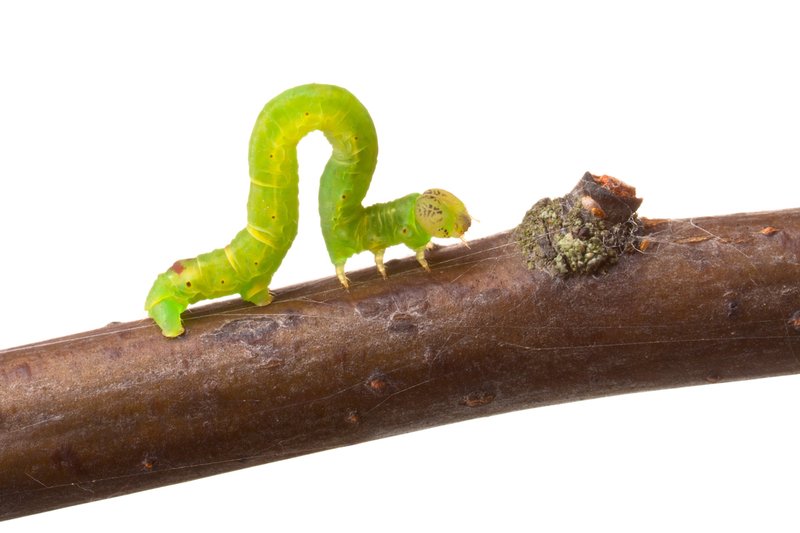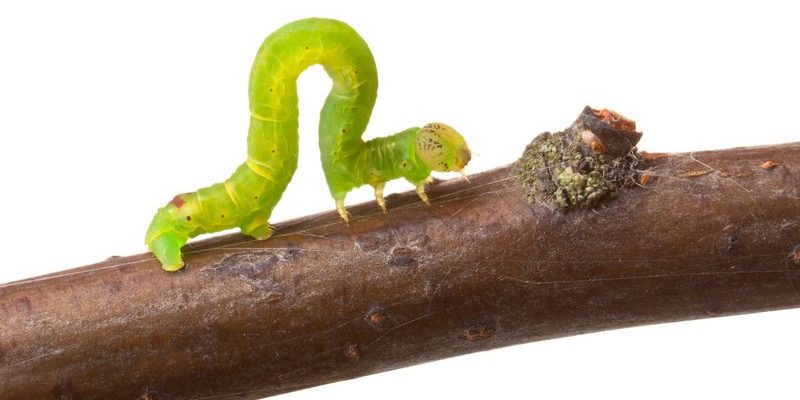
Inchworms, the larvae of various moth species, have a unique movement style that resembles measuring an inch (hence the name). As they inch along, they produce silk for different reasons, from safety to navigation. Understanding why they create these silk trails and their purpose can be quite enlightening—much like uncovering the secrets of a hidden art form in nature. So, let’s dig in!
What Are Inchworms?
Inchworms are the larval stage of certain moths, typically belonging to the family Geometridae. They are best known for their unique way of moving, which involves looping their bodies. This motion can make it seem like they’re measuring the distance they cover, hence the name “inchworm.”
These little critters can be found in various environments, including gardens, trees, and fields. They blend in well with their surroundings, often resembling twigs or leaves, making them a bit of a master in disguise. With over 2,000 species of inchworms, their colors and sizes can vary widely, adding to their charm.
The Silk Production Process
Now, you might be wondering how these tiny creatures produce silk. Inchworms have specialized glands that allow them to secrete silk threads. When they encounter a situation where they need stability or protection, they spin these threads with amazing precision.
The silk itself is made of proteins, similar to what spiders produce. It’s strong yet lightweight, making it perfect for various purposes. When you look closely, you’ll notice that the silk strands are fine and can stretch, allowing inchworms to use them in different scenarios—the perfect multitasking tool in nature!
Why Do Inchworms Create Silk Trails?
Inchworms create silk trails for a few key reasons:
- Safety: One of the primary reasons is to create a safety line. Just like a climber uses a rope when scaling a wall, inchworms use silk to prevent falling. If they slip or lose their grip, they can rely on the silk to catch them.
- Navigation: Silk trails also help inchworms navigate their territory. They can follow their own trails back if they venture too far from a safe spot or food source.
- Attracting Mates: Some species use silk to create a sort of habitat or territory to attract mates. While this may not be the most common use, it adds another layer to their silk artistry.
Understanding these purposes highlights the adaptability of inchworms in the wild. It’s quite impressive how something so small can utilize silk for various survival strategies.
How Do Inchworms Use Their Silk Trails for Navigation?
Inchworms are not just creators of silk trails; they are also skillful navigators. The silken threads they leave behind can help them find their way back to familiar spots. When inchworms explore their environment, they often wander off in search of food—usually leaves or young stems.
Here’s how it works: Picture being in a large park without landmarks. Having a string to follow can guide you back to your picnic spot. Inchworms use their silk trails in the same way. When they crawl, they leave a visual marker that they can retrace if needed.
This method is particularly useful when inchworms are out in the open where danger lurks. Their silk provides a safety net, ensuring they can return to the safety of their main habitat, which is usually well-camouflaged.
The Role of Silk in Protection
Silk plays a critical protective role in the life of an inchworm. When facing threats from predators such as birds or other insects, inchworms can rely on their silk to help create a barrier.
Some species will spin silk around themselves in a protective cocoon-like structure when threatened. This isn’t just for show; it can deter potential predators who might think twice before attacking a fuzzy, tangled mass. Plus, if they do happen to get caught, the silk can slow down their capture, giving them a chance to escape.
The ability to use silk as a protective mechanism illustrates the ingenious ways inchworms adapt and thrive in the wild.
Comparing Inchworm Silk to Other Silk Producers
When you consider silk in nature, you might think of spiders or silkworms right away. Each silk producer has unique characteristics and uses for their threads. While inchworms focus on safety and navigation, spiders primarily use silk for webs to catch prey.
Here’s a quick comparison:
| Feature | Inchworm Silk | Spider Silk |
|---|---|---|
| Purpose | Protection and navigation | Web-building and prey capture |
| Production | From glands while crawling | From spinnerets during web formation |
| Strength | Lightweight and flexible | Strong and durable |
Both types of silk showcase the incredible adaptability of these creatures in their respective environments. It’s fascinating to see how they’ve evolved to meet their needs.
Common Misconceptions About Inchworms and Their Silk
There are several misconceptions about inchworms and their silk trails. For one, many people think all inchworms can spin silk. While it’s true that most can, some species have minimal silk production. This variability often leads to misunderstanding their capabilities.
Another misconception is that inchworms are harmful. While they might munch on leaves, they play a crucial role in the ecosystem as a food source for other animals. Understanding this ecological balance can help foster appreciation rather than fear.
Additionally, many believe that inchworms spin silk primarily for building cocoons. In reality, their silk trails serve various purposes, as we’ve explored, making them more versatile than most people realize.
The Future of Inchworms and Conservation
As we look towards the future, the survival of inchworms and their silk trails can be influenced by environmental factors such as habitat loss and climate change. Preservation of natural habitats is crucial as these caterpillars play an important role in their ecosystems.
Conservation efforts focus on educating communities about the significance of these creatures, helping to ensure that inchworms continue to thrive. By maintaining a healthy balance in our ecosystem, we can appreciate the beauty and function of inchworms and their silk trails for years to come.
In conclusion, inchworm silk trails are much more than a pretty sight in nature; they are critical components of an inchworm’s survival strategy. Whether for protection, navigation, or attraction, these silk strands highlight the unique ways creatures adapt to their environment. Next time you see these delicate threads glistening in the sun, you’ll know the fascinating story behind them.

